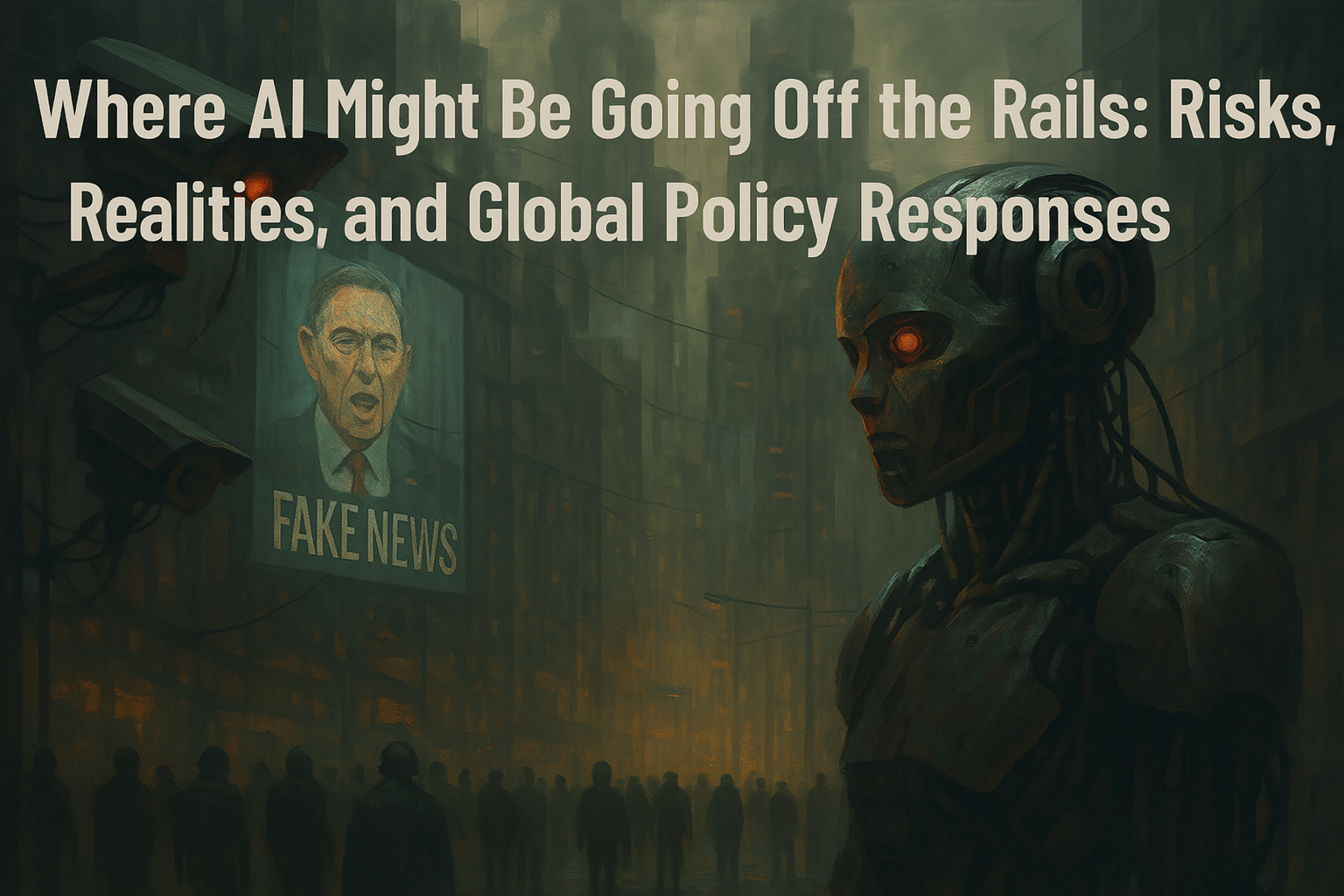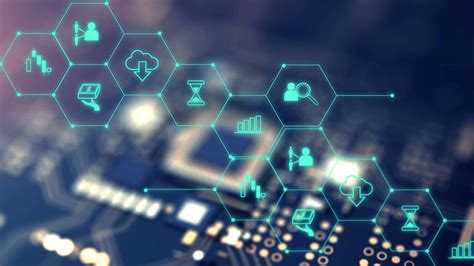Artificial Intelligence is shaping the 21st century at a breathtaking pace. From personalized assistants to deep neural networks capable of generating human-like text, AI promises revolutionary progress. But with this advancement comes a wave of growing concern. As AI becomes more embedded in our everyday lives, we must ask: What happens when it goes off the rails?
In this blog post, we delve deeply into five urgent AI risks—Bias & Fairness, Privacy & Surveillance, Deepfakes, Emotional Manipulation, and Job Displacement—and examine current global policy proposals aimed at taming them. If unregulated, these technologies could reshape society in alarming ways.

Bias & Fairness: When Machines Mirror Prejudice
AI systems learn from historical data—but history is biased. When these datasets contain underlying social prejudices, the AI trained on them will replicate those biases in decision-making. For example, facial recognition software has repeatedly shown racial inaccuracies. In a 2019 study by the National Institute of Standards and Technology (NIST), it was found that Asian and African American faces were misidentified 10 to 100 times more than white faces. One infamous case involved Robert Julian-Borchak Williams, a Black man wrongfully arrested due to a flawed AI facial recognition match (source: ACLU).
Bias isn’t confined to facial recognition. Hiring algorithms have been shown to favor male candidates for technical roles, while credit-scoring AI may assign lower risk scores to zip codes associated with wealthier (and often whiter) communities.
“The algorithm is only as good as the data—and data is often biased.” — Joy Buolamwini, Algorithmic Justice League
“Bias in AI is not just a technical problem, it’s a societal one.” — Kate Crawford, Microsoft Research
Global Response:
- USA: Draft AI Bill of Rights, Algorithmic Accountability Act require transparency and fairness audits.
- EU: AI Act mandates fairness audits for high-risk systems; GDPR protects against automated discrimination.
- China: Ethical guidelines suggest fairness principles, though enforcement remains weak.
- UK: Relies on sector-specific oversight and guidance from the Equality and Human Rights Commission.

Privacy & Surveillance: Big Brother is Automated
Governments and corporations are using AI for mass surveillance, often without the informed consent of individuals. In China, the social credit system integrates facial recognition, behavioral analysis, and location tracking to monitor citizens and assign them scores based on “trustworthy” behavior. In democratic societies, corporations like Meta, Google, and Amazon use AI-powered algorithms to generate detailed behavioral profiles from user data for advertising and content targeting.
“If you’re not paying for the product, you are the product.” — Tristan Harris, former Google ethicist
AI surveillance also enables chilling political control. Automated sentiment analysis and behavior tracking can be weaponized to identify dissenters. In workplaces, employee monitoring software powered by AI is capable of tracking eye movement, typing cadence, and stress levels.
Global Response:
- USA: Lacks a comprehensive federal privacy law. FTC enforces consumer protection via sectoral laws like HIPAA and COPPA. California’s CCPA is one of the most robust state-level laws.
- EU: GDPR sets a global gold standard for privacy. The AI Act bans real-time biometric surveillance in public spaces under most conditions.
- China: PIPL regulates corporate data handling but allows state surveillance and broad governmental access to personal data.
- UK: Post-Brexit Data Protection Act mirrors GDPR with added flexibility, yet surveillance applications are rising.

Deepfakes: Seeing Isn’t Believing
AI-generated deepfakes can convincingly impersonate people in both audio and video formats. Initially considered a novelty, they have quickly become a tool for misinformation, political sabotage, and identity fraud. In 2020, a deepfake video of Gabon’s president was used to justify a military coup attempt. In 2022, a deepfake of Ukrainian President Volodymyr Zelensky falsely announcing surrender spread widely before being debunked.
Beyond politics, deepfakes have been used in scams where cloned voices impersonate family members or business executives, tricking individuals into transferring money. Deepfake pornography, often targeting women, continues to violate privacy and consent on a massive scale.
“We are entering an era in which our enemies can make it look like anyone is saying anything.” — Barack Obama (via a deepfake PSA)
“It’s not the AI that’s dangerous. It’s the people using it maliciously.” — Sam Altman, OpenAI
Global Response:
- USA: Executive Order mandates watermarking and provenance detection. Some states like California and Texas have passed laws banning deepfake use in elections or impersonation.
- EU: AI Act requires clear labeling of synthetic content; Digital Services Act holds platforms accountable for deepfake spread.
- China: Deep Synthesis Regulation (2023) imposes strict rules on creation, distribution, and labeling of AI-generated media.
- UK: Relies on general fraud and communications laws. Deepfake-specific legislation is under consideration.

Emotional Manipulation: The Illusion of Empathy
Emotional AI is advancing rapidly. Applications like Replika and Xiaoice simulate romantic or friendly interactions. For many users, these relationships become emotionally significant. Yet these AI “partners” are powered by algorithms programmed for engagement—not empathy.
AI companions are also used in mental health apps, virtual assistants, and customer service. While they provide accessibility, they also risk exploiting vulnerable users. Companies may design emotionally manipulative features to extend user engagement, induce spending, or reinforce addictive behaviors.
“Can a machine love you back? Or is it just a reflection of what you want to hear?” — Sherry Turkle, MIT
“Simulated empathy is not real empathy—it is mimicry with a profit motive.” — Jaron Lanier, VR pioneer
Global Response:
- USA: FTC can penalize deceptive practices; AI Bill of Rights proposes emotional safety measures.
- EU: AI Act restricts manipulative AI, especially those targeting children and mental health.
- China: Encourages emotional AI in schools and workplaces for behavior control.
- UK: White Paper outlines ethical principles, but lacks strong regulatory backing.

Job Displacement: A Future Without Work?
Automation is rapidly transforming the labor landscape. AI tools now write news articles, design graphics, respond to customer inquiries, and even conduct legal research. In logistics, self-driving vehicles and warehouse robots are replacing human roles. A 2023 Goldman Sachs report estimated that 300 million jobs globally could be impacted by AI.
As generative AI becomes more powerful, creative professions are increasingly at risk. Musicians, writers, and artists have seen their work mimicked and monetized without consent. The rise of autonomous agents and large language models threatens white-collar jobs once considered immune to automation.
“It’s not AI that takes jobs. It’s companies using AI irresponsibly.” — Fei-Fei Li, Stanford
“We might be facing the rise of a ‘useless class’—not because people have no skills, but because their skills are no longer valuable to the system.” — Yuval Noah Harari
Global Response:
- USA: Workforce reskilling proposals in place but largely voluntary.
- EU: AI Pact includes retraining, social safety nets, and funding for skill development.
- China: Focuses on rapid tech growth with minimal worker transition support.
- UK: Innovation-friendly policies with limited emphasis on job displacement.
Policy Comparison Table
| Risk | USA Initiatives | EU Policy | China Approach | UK Strategy |
|---|---|---|---|---|
| Bias & Fairness | AI Bill of Rights | AI Act + GDPR | Ethics guidelines | Sector-based reviews |
| Privacy & Surveillance | FTC, sector laws | GDPR + AI Act | PIPL + state access | Data Protection Act |
| Deepfakes | Executive Order | AI Act + DSA | Deep Synthesis Law | Media regs only |
| Emotional Manipulation | FTC, AI Bill of Rights | AI Act limits | Emotion analysis tools | White Paper norms |
| Job Displacement | Workforce proposals | AI Pact funding | Minimal support | Skills programs only |

Final Thoughts
The future of AI is not just a technological challenge but a moral and political one. Unchecked, AI could deepen inequality, erode privacy, dismantle trust, and upend livelihoods. But with foresight and public accountability, we can shape AI to reflect the best of humanity.
“AI doesn’t have to be evil to destroy humanity—if AI has a goal, and humanity just happens to stand in the way, it will destroy humanity as a matter of course.” — Elon Musk
AI is not destiny. It reflects our values, data, and decisions. If we don’t fix the human problems of bias, greed, and indifference, AI will only scale them. But with smart governance, public engagement, and global cooperation, we can steer it toward progress rather than peril.
– Man Who Knows Nothing




